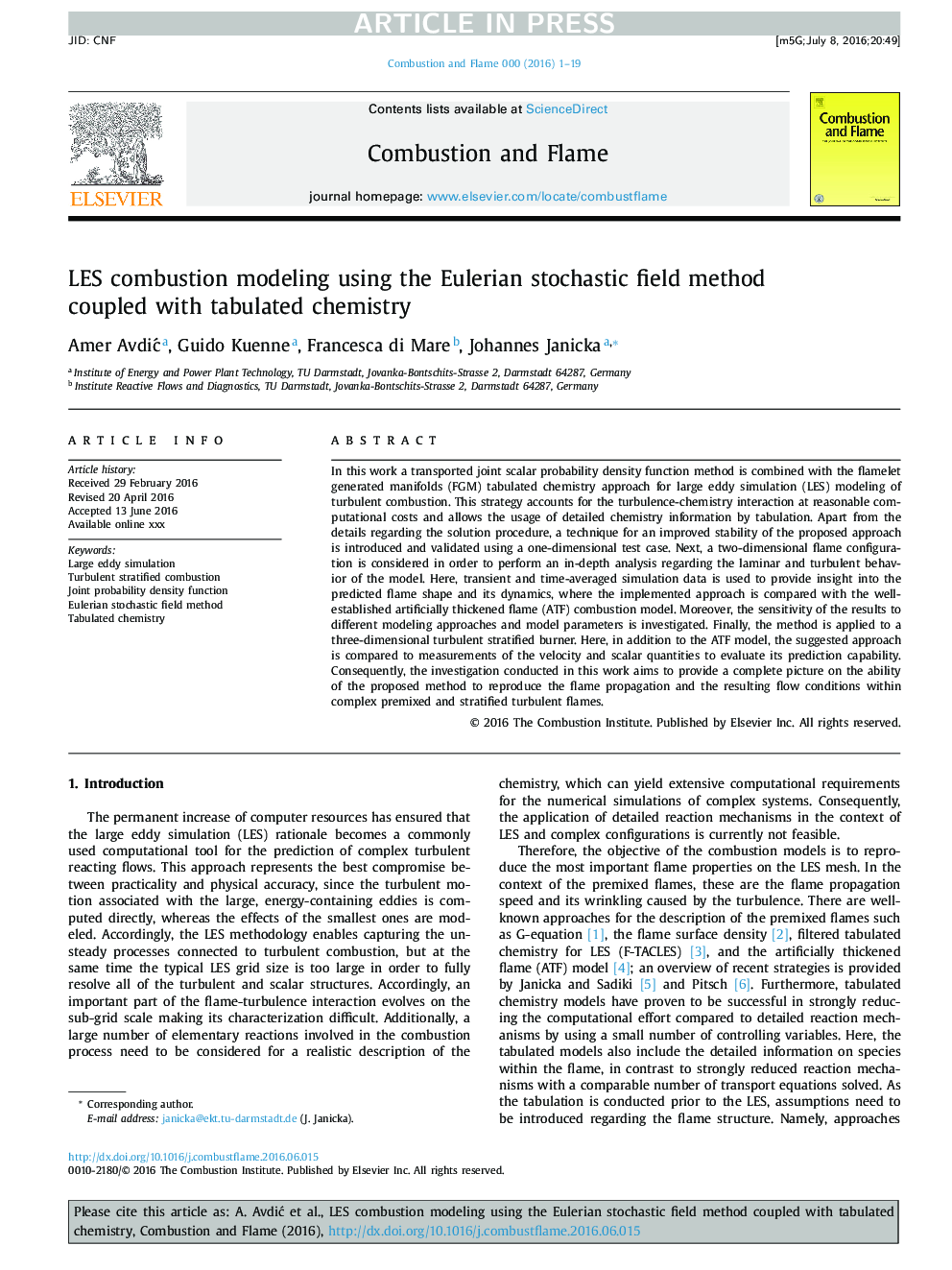| Article ID | Journal | Published Year | Pages | File Type |
|---|---|---|---|---|
| 4764532 | Combustion and Flame | 2017 | 19 Pages |
Abstract
In this work a transported joint scalar probability density function method is combined with the flamelet generated manifolds (FGM) tabulated chemistry approach for large eddy simulation (LES) modeling of turbulent combustion. This strategy accounts for the turbulence-chemistry interaction at reasonable computational costs and allows the usage of detailed chemistry information by tabulation. Apart from the details regarding the solution procedure, a technique for an improved stability of the proposed approach is introduced and validated using a one-dimensional test case. Next, a two-dimensional flame configuration is considered in order to perform an in-depth analysis regarding the laminar and turbulent behavior of the model. Here, transient and time-averaged simulation data is used to provide insight into the predicted flame shape and its dynamics, where the implemented approach is compared with the well-established artificially thickened flame (ATF) combustion model. Moreover, the sensitivity of the results to different modeling approaches and model parameters is investigated. Finally, the method is applied to a three-dimensional turbulent stratified burner. Here, in addition to the ATF model, the suggested approach is compared to measurements of the velocity and scalar quantities to evaluate its prediction capability. Consequently, the investigation conducted in this work aims to provide a complete picture on the ability of the proposed method to reproduce the flame propagation and the resulting flow conditions within complex premixed and stratified turbulent flames.
Related Topics
Physical Sciences and Engineering
Chemical Engineering
Chemical Engineering (General)
Authors
Amer AvdiÄ, Guido Kuenne, Francesca di Mare, Johannes Janicka,
